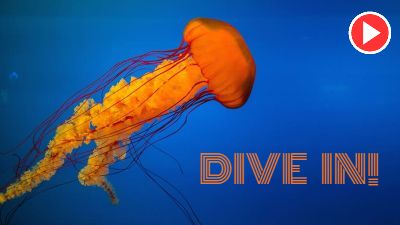This week’s quiz will test how much you know about the happenings around you. Play on.
Quiz Whizz: November 6
Polittics, Sports, Books or Movies…There has been a lot happening around you. Gear up to learn more.
Polittics, Sports, Books or Movies…There has been a lot happening around you. Gear up to learn more.
This week’s quiz will test how much you know about the happenings around you. Play on.
Sports can also be split into seasons. While some are ideal in the summer, there are some that can only be played either in winter or in a facility that mimics winter. Try this quiz to learn more
Winter is no excuse to stay indoors and be idle. Many usual competitive sports might take a break during this time, but there are also many winter sports to make up for it.
Here’s a quick quiz to find out if you know the names of these winter sports.
Discover the life and unique traits of the jellyfish with this video that takes you into their world.

The Bard of Avon occupies a position unique in world literature. His plays were written in the late 16th and early 17th centuries for a small repertory theatre. Today, they are performed and read more often and in more countries than ever before.
William Shakespeare (April 1564 – April 1616) was also known as the Bard of Avon or Swan of Avon. He was an English poet, dramatist and actor. He is often referred to as the English national poet and considered to be one of the greatest dramatists of all time.
He has written 37 plays and each of them touch upon love, anger, jealousy…all emotions we commonly feel. People watched his plays and felt an instant connection.
How familiar are you with his plays? Try this wordsearch to find out. You will have to identify the names of the characters from the clues – a quote and the play in which their appear. Have fun!
How much do you know about of the world’s largest ecosystems? Read on to explore…
Rainforests are the Earth’s oldest living ecosystems. Tall, dense jungles, they are so called due to the high amount of rainfall they experience, every year. Known for their complexity and diversity, they are home to more than half of the world’s plant and animal species despite covering a mere six percent of the planet’s surface. Did you know that rainforests thrive on every continent, the exception being Antarctica? Well, here’s a look at some from around the world.
Solve the puzzle to know just a little more about these incredible places.
North Western Ghats montane rainforests
The North Western Ghats montane covers 30,900 square kilometres of India, from southernmost Gujarat through Maharashtra, Goa, and Karnataka. They are found at an elevation above 1,000 metres. As of 1997, 13 protected areas had been designated, covering 13% of the ecoregion’s area. Some of these include Anshi National Park, Karnataka, Chandoli National Park, Maharashtra, Kudremukh National Park, Karnataka, Tansa Wildlife Sanctuary, Maharashtra, among others. The Kudremukh National Park is known for its Hanumanagundi Falls, also known as Suthanabbe Falls, and falls from a height of 22 m.
Amazon rainforest
The world’s largest tropical rainforest, also known as Amazonia or Amazon Jungle, it covers an area of 5,500,000 km2 and covers most of the Amazon Basin of South America and runs through Brazil, Peru, Colombia, Venezuela, Ecuador, Bolivia, Guyana, Suriname, and French Guiana. Over 4,38,000 species of plants have been registered here. It is also home to several species of animals including the jaguar, cougar, and anaconda, to name a few.
Equatorial rainforests
Tropical rainforests are those that occur in areas of tropical rainforest climate where there is no dry season. In other words, there is an average precipitation of at least 60 mm, every month. These are also known as lowland equatorial evergreen rainforests and are found in Africa. Did you know that most of Africa’s remaining rainforests are found in the Congo river basin, on the part of the continent that faces the Atlantic Ocean?
Such rainforests are well known for the pygmy people who live here. They are hunter-gatherer groups and are characterised by their short height (below one-and-a-half meters, on average). The Efe, Aka, Twa, Baka, and Mbuti people of Central Africa are a part of this group.
Southeast Asian Rainforest
As the name suggests, it covers Indonesia, Laos, Cambodia, and the Malay Peninsula. It is said to have covered a greater area in Asia but was destroyed due to deforestation. The forest is home to many rare mammals, amphibians, birds, and reptiles. Some of the species of animals found here include Bengal Tiger, Dawn bat, king cobra, and proboscis monkey among others.
How is learning and taking exams any fun? Beats me, but my dad seems to have a clue…
Guess who has exams? Nope, not me. Not the PB. Not Woody.
My dad!
Yep, my dad. Now, don’t think my dad is really young, okay? He is super old. Like ancient. But last year, for reasons I cannot figure out, he decided to go back to college. Well, not college-college, but he signed up for what’s called a distance-learning programme. Kind of like online school for people born in the Triassic period.
Check out this slider to find out how much weirder I think grownups can be…

Here are cartoons of famous personalities. Do you know them all?
When you read the newspaper, have you noticed that the centre page usually has a cartoon? It’s called the editorial cartoon and is usually a comment on the leading news of the day.
Sometimes the cartoon may be about an issue; at others, it may be focused on a personality. In this game, we’ve chosen six editorial cartoons from The Hindu featuring different personalities. See how many you can identify?
Look around your kitchen and how many spices can you see? Learn about the origin of a few of them with this cognitive challenge.
Did you know that India is called the Land of Spices? This is because of the different spices used in our cooking as well as the variety that the country produces. In fact, over 70% of the world’s spices come from India!
Pepper has to be our most famous export. So famous that foreigners – from the Ancient Romans in 30 BC to the Portuguese in the 15th century – were lured to the continent by this precious spice.
Interestingly though, not all spices originated from India. Play this memory game by identifying the spice. Once you match the image with its name, information about its origin will pop up!
A crossword for you to crack involving a little bit of geometry. Solve it now…
Everything around you has some form of shapes and has different sizes and weight. Take this crossword all about shapes and sizes and find out how many you know.